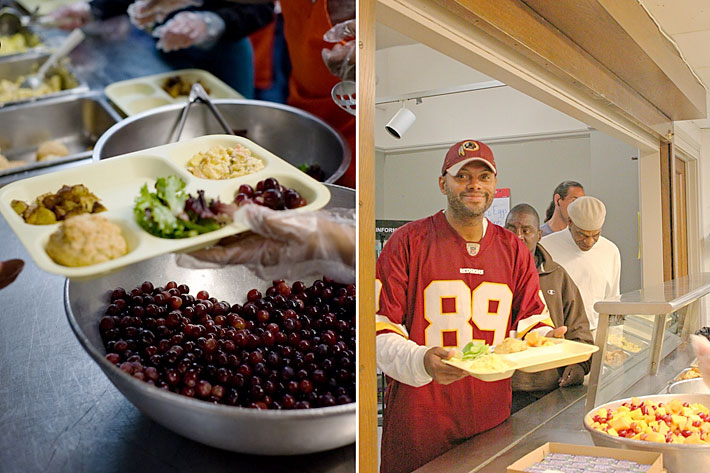Millions of Americans—about 1 of every 6—are food insecure, meaning they struggle to feed their families or go hungry every day, according to Feeding America, a nonprofit that focuses on national hunger relief.
Kim Robien, director of the Public Health Nutrition Master of Public Health program at the George Washington University Milken Institute School of Public Health, says populations struggling to satisfy their food needs may not be who you think they are.
“Many people who are food insecure are unemployed or homeless, but many are actually what we call the ‘working poor’— people who have jobs but don’t earn a living wage,” Dr. Robien said. “Even though they are employed, they may find it hard to put food on the table.”
In response, many people are turning to government assistance and food sharing programs, such as food banks and soup kitchens for daily meals. The U.S. Conference of Mayors’ Hunger and Homelessness survey found that 91 percent of cities reported an increase in people requesting food assistance in 2013.
A recent study conducted by the National Coalition for the Homeless says that some state legislatures—including California, Texas, Oklahoma, Florida, North Carolina and Pennsylvania—have passed bills to limit food-sharing programs. The programs targeted, according to the study, operate similar to DC Central Kitchen, Food Recovery Network and the Campus Kitchens Project in D.C. The report examines 12 cities that have enacted legislation within the last year, often because residents have complained about the behavior of participants or because the food preparation is deemed unsafe.
George Washington Today reporter Brittney Dunkins spoke with Dr. Robien about food insecurity in the United States and the report.
Q: How is food insecurity trending nationally?
A: We saw a big increase in food insecurity starting in 2008 with the economic downturn. According to data from the USDA’s Economic Research Service (ERS), 11 percent of U.S. households reported food insecurity between 2005 and 2007. The number jumped to 14.6 percent in 2008 and has stayed around that level for the last six years.
Q: How does D.C. compare to national trends of food insecurity?
A: Overall, D.C. has food insecurity rates that are comparable to the national average—13.4 percent, according to the most recent USDA ERS data. However, it is very clear that there are considerable disparities in food security rates across the District. Some wards have very little food insecurity, while other wards have very high rates of food insecurity. D.C. and surrounding counties in Maryland and Virginia are some of the most expensive places in the country to live, so individuals in the D.C. area who earn what would be considered a good salary in other parts of the country could be struggling to pay all their bills, especially for food.
Q: What government or food-sharing programs serve populations that are food insecure?
A: There are a number of government programs that provide assistance to food insecure individuals—the Supplemental Nutrition Assistance Program (SNAP) being the largest. These programs play a very important role in alleviating food insecurity, however, they do not completely eliminate it. Many people, especially the working poor, may not meet the eligibility requirements for these programs because they make just a bit too much money to qualify, yet not enough money to provide food for their families. Also, many of these federal programs were designed to supplement participants’ food budgets, not to fully meet their needs. Subsequently, there are a large number of people falling through what we call the “nutrition safety net.” These government programs and the great work being done by food banks, soup kitchens and food recovery networks are providing important short-term food assistance to help these individuals meet their basic food requirements.
Q: How does legislation that limits food sharing affect food insecurity?
A: By limiting food-sharing efforts, communities eliminate a potential mechanism to combat food insecurity. The arguments to limit food sharing typically revolve around safety of food preparation, preventing food-borne illnesses and the potential competition with food purveyors in the community. However, groups like DC Central Kitchen and the Food Recovery Network have developed protocols such as food and safety checklists and training programs for volunteers to ensure food safety in the food recovery process, which involves collecting unused or excess food from restaurants and food retailers and giving it to those in need. In my opinion, efforts to limit food sharing are unfounded. The arguments against food-sharing programs likely result from a lack of understanding of the true scope of the food insecurity problem in this country, as well as the great progress that has been made by food recovery networks with regard to efficiency and food safety.
Q: With limits to food sharing growing, how can food security be improved nationally?
A: Poverty is really the underlying cause of food insecurity. For truly sustainable improvements in food insecurity rates, we really need to address poverty through a variety of different measures from jobs creation and job training to increasing the minimum wage


